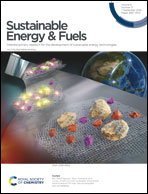Combination effect of flow channel configuration and anode GDL porosity on mass transfer and performance of PEM water electrolyzers
Abstract
The proton exchange membrane (PEM) water electrolyzer is being recognized as a promising hydrogen production technology. Enhanced mass transfer of water can effectively ensure sufficient reactant supply, to achieve efficient hydrogen production. A three-dimensional numerical model of the PEM water electrolyzer was constructed to account for the combined effect of the non-uniform depth of the flow channel and the non-uniform porosity of the anode gas diffusion layer (A-GDL) on the mass transfer characteristics. The results show that the mass transfer ability near the outlet of the flow channel is enhanced by narrowing the depth of the flow channel and increasing the A-GDL porosity along the flow direction, which directly leads to performance improvements. Increasing the A-GDL porosity gradient has a more pronounced effect on the mass transfer ability under the rib than under the flow channel, where the current density under the rib increases while the current density under the flow channel decreases. Compared to the conventional design, the uniformity of the current density distribution is increased by 37.9% and the average current density at 2.0 V is increased by 115 mA cm−2 in case 6. The results of this model can provide useful guidance for the design of PEM water electrolyzers.



 Please wait while we load your content...
Please wait while we load your content...